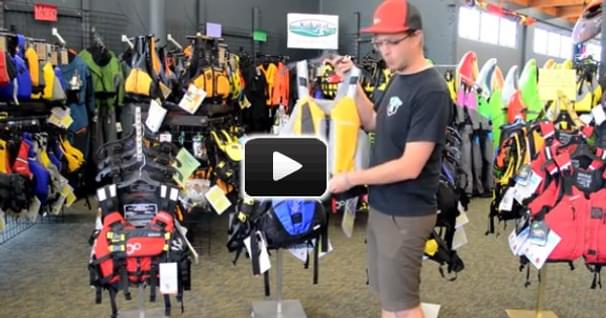Kayaking Safety - The Essentials
I'm sure you'll be happy to hear that kayaking is a remarkably safe sport. In fact, compared to most other outdoor activities, the chances of getting hurt while kayaking is very small. With that said, safety is always a concern, because whenever you're dealing with water, if things go wrong, situations have the potential of becoming very serious very quickly. This is why you need to understand and appreciate the risks and hazards involve with kayaking, and that you assume a conservative and safety conscious attitude when making decisions on the water.
On a similar note, you need to dress for the conditions. Cold water represents the biggest hazard when you're paddling, because if you're immersed in cold water for any length of time, you can become hypothermic very quickly. So if you plan to paddle in cold water you just need to be more conservative with your decisions. Paddle in calmer conditions, paddle closer to shore, and never paddle alone.
Also keep in mind that you're better off overdressing and being too warm, than being too cold. In a busy harbor or on a crowded lake, the other water traffic can be the biggest hazard. You're biggest concern should be power boats and personal watercraft which zip around the water erratically. The best way to avoid them is to stay close to shore.
One of the most important basic skills to learn is how to choose an appropriate paddling location. By knowing what to look for, and what to avoid, you'll stay safe, and insure that you're paddling experience is fun for everyone involved. Most importantly, you'll want to pick the location that is very sheltered from both wind and waves. The ideal kayaking environment has easy access for launching, lots of places to go ashore, and minimal motorized boat traffic. Look for calm bays, or quiet lakes and river ways, without noticeable current.
50 years of lightweight, maneuverable, high-performing kayaks.
Check out this interview with Tom Keane, Eddyline Kayaks Co-Owner, on their journey!
Although it can be tempting to search out the most remote location possible, more populated areas are nice because there will nearly always be someone around who can lend a hand. For this same reason, it's important that you never paddle alone. There's safety in numbers when it comes to being on the water.
Although the ocean and large lakes can sometimes be incredibly calm, and offer the ideal kayaking environment, you do need to appreciate how quickly the weather can turn, and how dynamic these environments can be. If you plan on paddling in such areas, it's important that you check the weather forecast before hand, and that you keep a close eye on what it's doing, so you can see bad weather as it rolls in and act accordingly.
It's also important that you're aware of different take out spots. The last thing you want is to feel compelled to charge forward through the elements to reach the one take-out spot that you know of.
With a conservative attitude kayaking can be a very safe sport. In fact, injuries are very uncommon. The downside is that if things do go wrong, being on the water allows things to get very serious, very quickly. So you need to be prepared for the worst.
The safety gear that you bring on the water will vary depending on the type of outing that you're doing. If you'll be staying close to shore, and you'll only be paddling in water that is sheltered from wind and waves, and has easy access so that spending the night out in the wilderness isn't going to happen, then your best piece of safety gear is your PFD. And a whistle is helpful for catching someone's attention if the need arises.
As soon as you venture into more exposed conditions you suddenly need a lot more safety equipment and the training in its use. If you plan on paddling farther from shore than you can comfortably swim, along a shoreline that doesn't allow an easy escape from the water, in wind, waves or current, then you really need to take a rescue course.
Related Articles
As the days get shorter and the weather gets colder, it becomes harder to get out and paddle and easier…
A wet exit is a mandatory skill for any modern day kayaker to learn. As an instructor it is one of the…
Welcome to Next Adventure, the favorite retailer in Portland, Oregon, and also online. We're here…
Hi, I'm Robert Stehlik with Blue Planet Surf. I wanted to talk a little bit about moving around on the…




